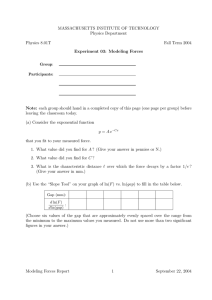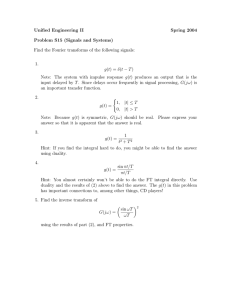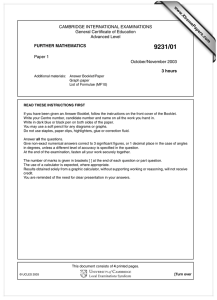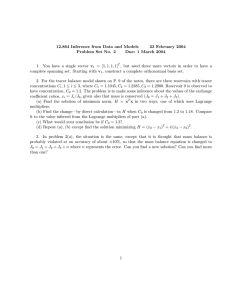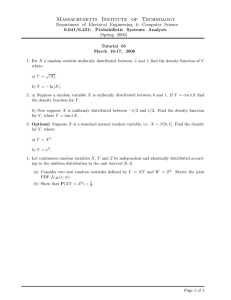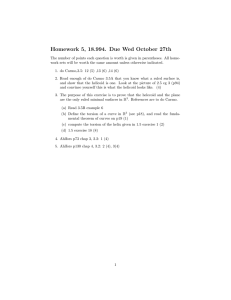Homework 6, 18.994. Due Wed ...
advertisement
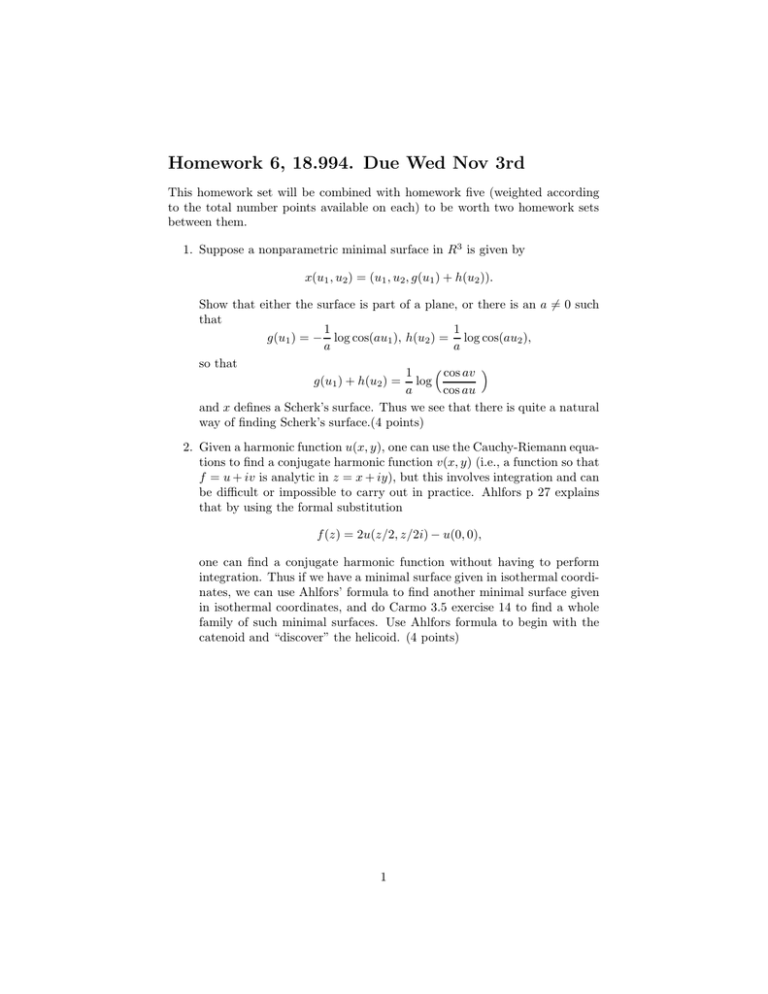
Homework 6, 18.994. Due Wed Nov 3rd This homework set will be combined with homework five (weighted according to the total number points available on each) to be worth two homework sets between them. 1. Suppose a nonparametric minimal surface in R3 is given by x(u1 , u2 ) = (u1 , u2 , g(u1 ) + h(u2 )). Show that either the surface is part of a plane, or there is an a = � 0 such that 1 1 g(u1 ) = − log cos(au1 ), h(u2 ) = log cos(au2 ), a a so that � cos av � 1 g(u1 ) + h(u2 ) = log a cos au and x defines a Scherk’s surface. Thus we see that there is quite a natural way of finding Scherk’s surface.(4 points) 2. Given a harmonic function u(x, y), one can use the Cauchy-Riemann equations to find a conjugate harmonic function v(x, y) (i.e., a function so that f = u + iv is analytic in z = x + iy), but this involves integration and can be difficult or impossible to carry out in practice. Ahlfors p 27 explains that by using the formal substitution f (z) = 2u(z/2, z/2i) − u(0, 0), one can find a conjugate harmonic function without having to perform integration. Thus if we have a minimal surface given in isothermal coordinates, we can use Ahlfors’ formula to find another minimal surface given in isothermal coordinates, and do Carmo 3.5 exercise 14 to find a whole family of such minimal surfaces. Use Ahlfors formula to begin with the catenoid and “discover” the helicoid. (4 points) 1
